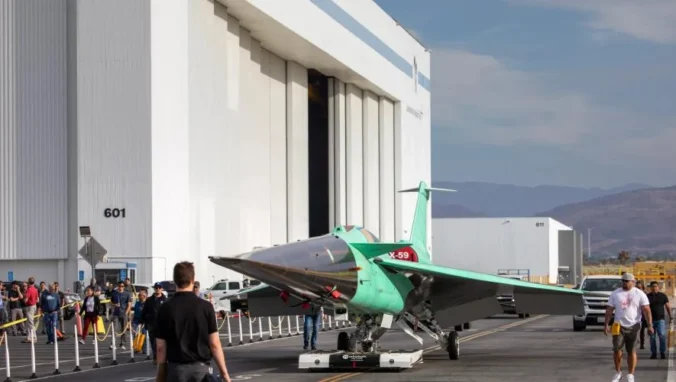X-59 is a supersonic speed demonstrator that was co-built by NASA and Lockheed Martin has rolled out of the hanger. This is marked as a historic event, as the project is considered a step towards sustainable supersonic flight.
Sustainable Supersonic Flight
Supersonic flight is not only a technological challenge, but it has an environmental toll. Sonic booms cause significant noise hazards; therefore, aviation authorities have put a restriction on supersonic flight over land mass. Engineers are trying to solve this with X-59 experimental; the sound produced by boom will be reduced to merely a “Thump”.

The aircraft has a length of almost 93′ 10″, and its iconic large nose has almost 46% of it. This nose will cut through the shock and shape the flow over the rest of the body. Aircraft have many of subsystems borrowed from other aircraft to reduce development costs, such as landing gear and engines, which are taken from F-16. One of the important aspects of this aircraft is that the pilot will not have a forward-looking view and the cockpit is assessed by artificial camera view.
Flight of X59 will be one of the biggest achievements of aviation. NASA is expecting a noise reduction by 74dB PL (perceived level) at the 55,000ft cruise level. This is a relative unit of loudness measurement and indicates a loudness some where between a slamming car door and a clap

